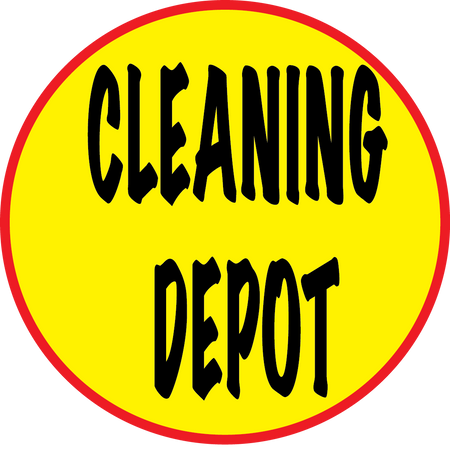
Cleaning for Health vs. Appearance and Smell
As technology and innovation continue to shape the industry, it's essential to keep the focus on cleaning for health. Prioritizing health ensures that both building service contractors and in-house teams use cleaning practices that safeguard the well-being of those in the building.
✅ Cleaning for Health
-
Definition: Cleaning for health means targeting harmful pathogens and improving indoor environments, not just making things look or smell clean.
-
Invisible Threats: Germs, bacteria, and biofilms are often not visible but are key targets in cleaning for health.
-
Training: Proper education and ongoing training are essential for cleaning staff to understand what products to use, when, and how.
🧪 The Science Behind It
-
Data-Driven Cleaning: Use of ATP meters, indoor air quality monitors, and surface testing to prove cleaning effectiveness.
-
Environmental Management: Cleaning professionals are seen as managers of indoor environments—requiring knowledge in biology, chemistry, and human behavior.
-
Communication: Staff should not only clean effectively but also be able to explain what they are doing and why to clients or building occupants.
🛠️ Standards and Structure
-
SIMS (Standardized Industry Management System): Offers a framework to reduce operational chaos, improve protocols, and align with GBAC (Global Biorisk Advisory Council) for infection prevention.
-
Checklist-Based Systems: Help standardize practices and make staff more effective.
🌍 Diversity and Accessibility
-
Training materials were translated into multiple languages to address the diverse U.S. cleaning workforce.
-
This inclusivity helps eliminate language barriers that often compromise proper training.
📊 Using Data for Proof and Marketing
-
Measuring and showing reductions in surface bio-loads and improved air quality impress clients and build long-term trust.
-
Presenting simplified data reports helps non-technical stakeholders understand the value of cleaning for health.
🔬 1. The Science of Cleaning: Mold Spore Case Study
-
A compelling example was shared about a school with moisture issues. Spore counts rose from 129 (empty building) to 5,000 (occupied) and skyrocketed to 60,000 when carpet tiles were removed.
-
This demonstrates how restoration work can worsen conditions without proper indoor air quality (IAQ) planning.
-
Science-backed tools like ATP meters, IAQ monitors, and fluorescent markers help quantify contamination not just assume cleanliness.
🛠️ 2. Tools Are Available But Are They Used Properly?
-
Many advanced tools (UV lights, ATP meters, fluorescent protein detectors) are commercially available and affordable.
-
The real gap is education and integration managers often don't know how to interpret results or apply data effectively in workflows.
📈 3. Economic Reality: Quality Costs More
-
The tension between science-based protocols and budget constraints is a recurring theme.
-
SIMS (Standardized Industry Management System) helps tie cleaning protocols to measurable outcomes, but selling that value to cost-conscious clients remains a challenge.
-
Key question: Will facility owners pay for a higher standard of clean?
🏥 4. Tailoring by Space Type: Hospitals vs. Classrooms vs. Sports Arenas
-
Strategies vary greatly depending on usage:
-
Locker rooms, showers, and restrooms need specialized attention.
-
Cleaning around elite athletes or in healthcare settings demands disinfection rigor and protocol consistency.
-
Some organizations only bid on healthcare spaces because of the expertise and investment required and because other sectors often won’t pay for it.
-
🌬️ 5. Indoor Air Quality = Part of the Hygiene Chain
-
IAQ is critical “you walk into it, you breathe it.”
-
Tools like MERV filter evaluations, airflow audits, and traffic pattern analysis are emphasized.
-
The chain of transmission (air to floor to furniture to hand) makes it clear: cleaning for health is not just visual or tactile.
🧠 6. Cleaning = Professional Environmental Management
-
Cleaning professionals are being reframed as environmental health specialists.
-
2024 cleaning is not about how it looks or smells : it's about metrics, impact, and invisible risk reduction.
🔄 Standardized Cleaning Processes
-
Clockwise or systematic room cleaning ensures consistency and coverage.
-
Free-form cleaning leads to missed areas:establish clear policies and best practices.
-
Emphasize training on standardized procedures rather than personal/home cleaning habits.
🌬️ Indoor Air Quality (IAQ) Awareness
-
People spend ~90% of their time indoors, making IAQ critical to health.
-
Cleaning activities can spike VOCs and particle counts, which impacts air quality.
-
Use IAQ monitoring tools to track:
-
VOCs
-
Particulate counts
-
CO₂ (as a proxy for ventilation and infection risk)
-
🧪 Measurement Tools Include:
-
IAQ monitors with particle counters
-
Swabs, UV lights, agar plates for surface contamination
-
Simple tools (e.g. lint rollers) for practical testing
🧼 Disinfection Chemistry & Safety
-
Hydrogen peroxide is increasingly preferred for its:
-
Shorter dwell times
-
Reduced toxicity
-
Better material compatibility
-
-
Avoid overuse or incorrect dilution of products (e.g. "glug method")
-
Read and follow labels: the label is legally binding under OSHA.
📊 Evidence-Based Practice
-
Show proof: inspections, fluorescent testing, KPI tracking
-
Measurement should not be niche, it should be a daily practice
-
Cleaning should be based on health outcomes, not appearance alone
📣 Marketing & Storytelling
-
Reputation and expertise build trust, clients want proven professionals
-
Educate the public: speak at community events (Rotary, PTA, etc.)
-
Share personal or mission-driven stories that show your passion and credibility
🛑 Reject Inadequate RFPs
-
Avoid accepting contracts that compromise cleaning standards
-
Create your own RFPs based on professional assessments of the space and traffic
-
Be willing to walk away if a client won’t commit to proper cleaning levels
🧑🔬 Be the Authority
-
The cleaning industry, not regulators, should lead cleaning standards
-
Professionals need to define what safe, healthy cleaning looks like
-
Education and unity across manufacturers, trainers, and service providers are essential
At Cleaning Depot, we have many products available to help you achieve the best results for your clients' needs!
